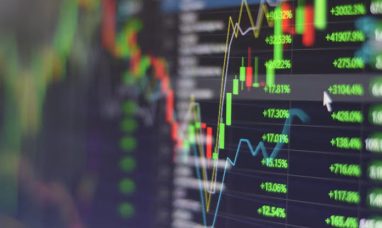The price of U.S. natural gas for October delivery stood at $2.642 per MMBtu on August 25, only to edge slightly higher to $2.72 by September 12.
While U.S. natural gas inventories have been steadily increasing, they remain below the end-of-season highs witnessed between 2019 and 2022. As we approach the peak demand season of 2023/2024, there’s a substantial supply of this energy commodity stored across the United States. As of September 1, 2023, storage levels stood at 3.148 trillion cubic feet, marking a 17.2% increase from the previous year and a 7.6% rise above the five-year average. The injection season is set to conclude in November, with 3.644 tcf and 3.732 tcf in storage at the onset of the withdrawal season in 2022 and 2021, respectively. In 2020, supplies peaked at 3.958 tcf, while in 2019 and 2018, they were at 3.732 tcf and 3.234 tcf, respectively.
Baker Hughes’ report as of September 8 revealed 113 North American natural gas rigs in operation, a figure 53 lower than the previous year. This suggests that natural gas stocks may not accumulate rapidly in the coming weeks and months as we approach the withdrawal season.
Over the past months, natural gas prices have largely traded within a range of $2.50 to $3.00. This stability followed a turbulent period that saw prices surge to $10.028 per MMBtu in August 2022 and subsequently dip below the $2 mark between February and April 2023.
Reviewing the October ICE U.S. natural gas futures chart since June 2023, we notice most of the price action taking place within the $2.50 to $3.00 per MMBtu range. As of September 12, natural gas was comfortably situated within this range, trading at over $2.70 per MMBtu. This has led many to believe that there’s a likelihood of another test of the upper end of this trading range.
Considering seasonality and the inherent uncertainty of winter demand for heating, natural gas futures could potentially experience a rally from October through the early months of 2024. The forward curve extending to January 2024 shows a significant over 35% premium for NYMEX natural gas for January delivery compared to the October futures. January NYMEX natural gas was trading nearly $1 higher than the nearby futures contract due to seasonal factors. However, natural gas remains substantially lower than the August 2023 high, offering room for a rally if colder temperatures and increased demand come into play.
Adding to this, the weather in Europe could be another catalyst for a potential rally in the coming months. Western European countries have long relied on Russian natural gas exports through pipelines, but the ongoing conflict in Ukraine has seen Russia wield natural gas and crude oil as economic weapons against nations supporting Ukraine. This geopolitical tension caused Dutch and U.K. natural gas prices to reach all-time highs in March 2022, only to plummet due to a warm winter in 2022/2023. Recently, Dutch prices have shown signs of recovery, and U.K. natural gas futures have followed suit. As U.S. LNG traverses the globe via ocean vessels, NYMEX U.S. natural gas prices have grown increasingly sensitive to European price fluctuations. A cold European winter could significantly boost U.S. prices amid the ongoing conflict.
It’s important to note that natural gas is not an investment market but rather a highly volatile commodity market, susceptible to both price surges and crashes. While it may present challenges for investors, it offers abundant opportunities for agile traders who closely monitor the natural gas futures arena. Therefore, it’s crucial for traders to maintain a disciplined approach and a well-defined strategy, especially during the volatile winter season. At the current price level, the odds appear to favor a potential upside.
In contrast, investors should exercise caution and consider avoiding the natural gas futures market. However, traders can look forward to embracing the upcoming winter months, provided they manage risk levels for their existing positions effectively.
Ultimately, when trading natural gas, it’s imperative to remember that long or short positions are not executed at the desired price but at the prevailing market price level, underscoring the need for prudent risk management for a successful trading experience.
Featured Image: Freepik @ wirestock















